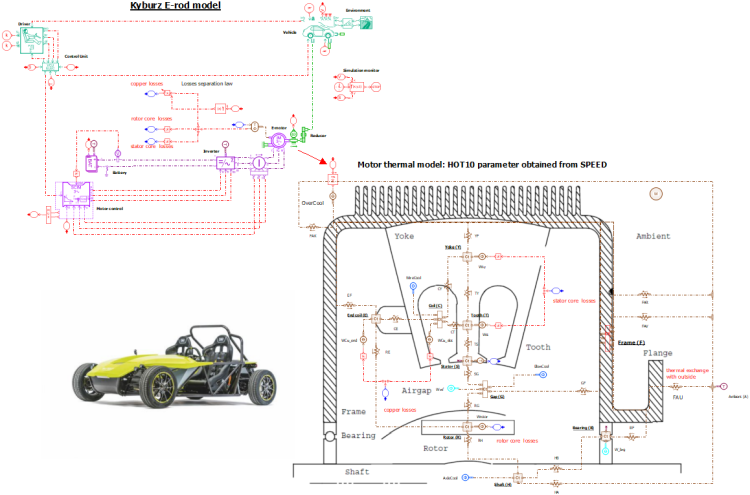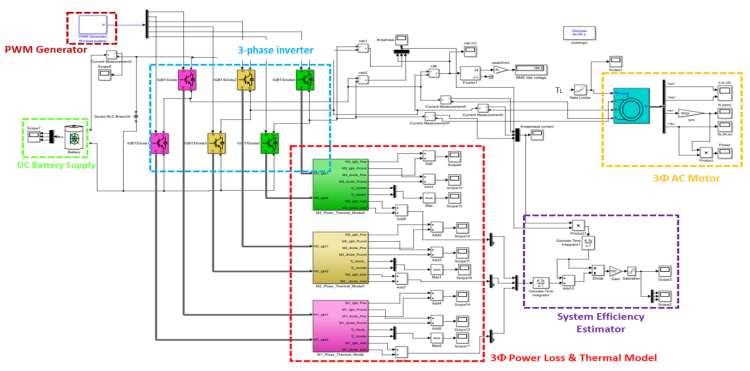Newsletter 3 – article on Modelling (continuated)
ModellingThe focus of this workpackage (2) is as follows:
– developing innovative modelling approaches of batteries, electric machines and inverters that are based on first principles (mechanical, physical, electrochemical, electro-thermal, electromagnetic model basis),
– developing model scalability approaches and real-time models featuring low CPU demand,
– ensuring full connectivity and interoperability of these models on two levels:
a. between models aimed to simulate particular phenomena in a specific component,
b. between different components/domains,
– elaborating reliable parametrisation tools featuring high level of generality and wide application range.
Rationale of the research and development in WP2 arises from the fact that model-based development enables engineers to test the system in early phases of the development within a virtual environment, when it is inexpensive to fix problems. Such model-based development is a process that enables faster, more cost-effective development of dynamic systems, including control systems, signal processing, and communications systems. In model-based development, a system model is at the centre of the development process, from requirements development, through design, implementation, and testing. System engineers use models to derive low-level requirements and then use the models to interface with customers and suppliers. Algorithm developers can then reuse and elaborate the same models to build and test more detailed designs. Further in the development process, these models can become the design artefacts from which hardware engineers automatically generate HDL code.
 (SIE-SAS): Methodology for parameter extraction from SPEED
(SIE-SAS): Methodology for parameter extraction from SPEED
In addition, the system level models and tests can be reused to validate the performance the final hardware against the model level results. Models are re-used and elaborated at every development phase, reducing the amount of translation inefficiencies and errors in the process. With the model at the center of the design process, design iterations are faster, design artefacts are automatically generated, and engineering teams have a common platform to share design.
As an answer to this challenge OBELICS delivers innovative and reliable modelling approaches that are mechanistically based and are real-time capable or allow for systematic scalability towards real-time models. Furthermore, derived models ensure compatibility of the models between different components as well as development levels/phases.
To ensure compliancy of the developed models with these objectives, definition of the model’s features is driven through systematic model requirement specifications through relevant use cases and covers: interface inputs, interface outputs, HiL compatibility, expected minimum exchange rates of models, model features with respect to the phenomena covered by models and anticipated development as well as integration platforms.
The ambition in the area of advanced battery, electric machine and inverter models arises from development of innovative models, model scalability methodologies and parametrization techniques that push the boundaries of simulation and testing of EVs with the goal to support more efficiently frontloading in the development process. Developed models will also allow for approaching engineering limits with higher certainty compared to the existing state-of-the-art resulting in reduced effort in physical testing and thus supporting development of more efficient EVs in shorter time and with less effort. These features are crucial to improve efficiency, reduce development efforts and thus costs while improving safety of the next generation of EVs. Furthermore, detailed models provide new insights into performance, reliability and safety aspects, which are also crucial for development of next generation of EVs.


(VUB): Modular electro-thermal inverter model implementation
(SIE-SAS): Integration of the advanced electro-thermal model in the vehicle simulation






 Agreement no. 769506
Agreement no. 769506